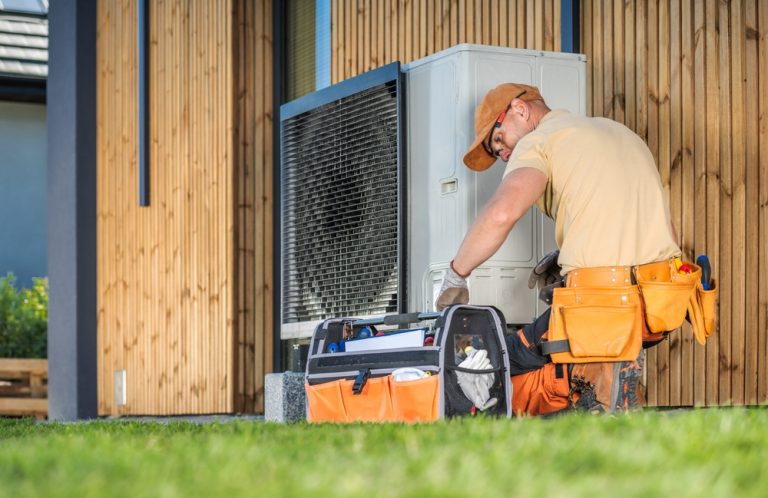Do you know how to save money on your laundry cycles?
Whether you work or you’re a retiree, whether you live in a house or in a small apartment, one thing’s for sure: you need to wash and launder your items so that they’re clean and fresh the next time you use them.
But although this is a mandatory and basic necessity, your laundry cycles can be pretty expensive, almost as much as heating and cooling. Generally speaking, washers and dryers are responsible for roughly 5 percent of a household’s annual electricity usage, and while that might not seem like that big of a deal, I don’t think someone would mind saving up some extra bucks.
Moreover, your laundry cycle habits can have a major impact on how much money you spend on electricity and water, but don’t worry, I have some tips for you. If you don’t want to allow your laundry cycles to eat away at your finances, keep reading, because you’ll love these suggestions!

1. Water settings
People are creatures of habit, which means that they might do something and think that it will work in many other situations too. For example, you might select the same setting for every laundry cycle, but this habit might be costing you serious bucks.
One way to lower your electricity bill is by changing the water level setting on your trusted appliance to match the appropriate load size. This tiny change is going to cause major results in the long run, meaning lower water usage and costs.
2. Non-peak hours
If you’ve thought that peak hours were only in people’s imagination, you’re wrong, and you could use this information to your benefit. When it’s peak hours and you set a laundry cycle, you might pay more for electricity, and that’s because the consumption is higher in that period.
Of course, the schedule depends from one company and state to another, so the best way to get more insights on this one is by asking your utility company when electricity use is lower and doing your laundry during these off-peak time frames.
If you don’t want to ask them that, you can do your things in the time frames when the majority of people are at work, so you can save a couple of bucks.
Keep reading to discover all the tips and tricks on how to save money on your laundry cycles!
3. Don’t wash too much
Don’t get this the wrong way, because it’s obviously important to wash dirty laundry, but knowing when you should run a laundry cycle is going to help you save money and use your appliances more efficiently.
For instance, particular items, such as sweaters, sleepwear, jeans, and jackets, can be worn plenty of times before needing a good refresh. Moreover, if you’re lucky to have a dryer that has a steam cycle option, you can skip a laundry cycle and quickly steam your clothing pieces using this function instead. This will give them a fresh feel, and they’ll be as good as washed.

4. Air dry laundry
Many years ago, when dryers weren’t invented to make people’s lives easier, air-drying laundry was the way to go. If you want to save money on your energy bill, you should take notice of this because it’s going to help you.
Besides saving money, air-drying your laundry is going to keep it in good condition, considering that the high temperature in the dryer can cause the fabrics to shrink or get damaged.
Whether you hang your clothes outside, under the sun, or on a drying rack, this tip is going to be a lifesaver; of course, as long as you don’t need those items ASAP.
Do you know any other tips on how to lower the costs of your laundry cycles?
5. Wait to have a full load
Don’t overrun your appliances by starting a cycle each time there are a couple of dirty items in your laundry basket. It’s better to wait until you have a full load to wash so you don’t double on cycles and waste money on water and electricity bills, as well as on your detergent.
It doesn’t matter how many items you put in, because your trusted appliance will need between 14 and 20 gallons of water per cycle, depending on the type. So make sure to load your washing machine as full as possible to get the most out of its capacity, but don’t forget to not overcrowd it, because that’s not good either.
If you get too excited and pack your washer too tightly, your laundry won’t have enough room to move, so you won’t enjoy clean items. You have to find that sweet spot between too empty and too full, but it’s not hard at all.
6. Choose the right wash cycle
Another smart tip to lower your energy consumption on your laundry cycles is to choose the right cycle for the load that you want to clean. It might sound hard to believe, but you can save a lot of water by simply adjusting your settings as necessary.
Sometimes you don’t need to run a complete laundry cycle because all you might need is a quick express rinse. Don’t forget to skip the heavy-duty settings, because they consume a ton of water. Moreover, trust me when I tell you that you won’t need to increase the setting or use more water to give a load of towels a good wash.
Besides that, some appliances might have a rapid wash cycle that uses less water and energy than longer ones, and these are fantastic for cleaning small, lightly dirty loads in 15 to 40 minutes. However, if you plan on washing a larger load of clothing, you will need more water to properly soak those items so that they can be clean and fresh at the end of the process.

7. Use cold water
One myth that might make you waste lots of money on your laundry cycles is the idea that you always have to use hot water; otherwise, you won’t get clean things. Nothing further from the truth, because cold water is an excellent way to save money on electricity as well as clean your items efficiently.
However, if you don’t want to wash your belongings with cold water, you can do a combination that will still help you save a couple of bucks in the long run.
Instead of using hot water to rinse your things, you can set your machine to use cold water instead. It might not seem much at first, but over time, it can add up, and you’ll notice the difference in your pocket.
8. Routine maintenance
I’m a strong believer that prevention is better than treatment in every case possible, and saving money on your laundry cycles is no exception. One important thing you should never neglect is cleaning your trusted appliances after you’re done cleaning your clothing and bedding.
Moreover, for the best dryer performance ever, you should clean your lint filter before each load. A messy lint filter might cause your dryer to not do its best job, and to compensate for the lack of effort, it will use more energy and a longer drying time.
But your dryer is not the only one that deserves your attention, so don’t neglect your washing machine because it does the hard job for you. You can clean your dear appliance with some good-quality washer-cleaning tablets because they help you get rid of any unwanted odors, and they can also help you remove grime residues that might build up in there.
Another thing you shouldn’t neglect is leaving the washing machine door open after cycles so that it has the chance to dry out, avoid odors and mildew, and extend the duration between gasket replacements.
If you’re looking for some tablets that will keep your washing machine healthy and fresh, try these ones from Amazon. I tested them for a couple of months, and let me tell you that they work like magic.
What do you think about these tips on how to lower your bills on your laundry cycles? Do you have any other suggestions for us?
Leave them in the comments below! If you find this article helpful and you want to read something else from The Price Makers, here’s another fantastic post for you: Never Buy These 10 Things at Gas Stations














